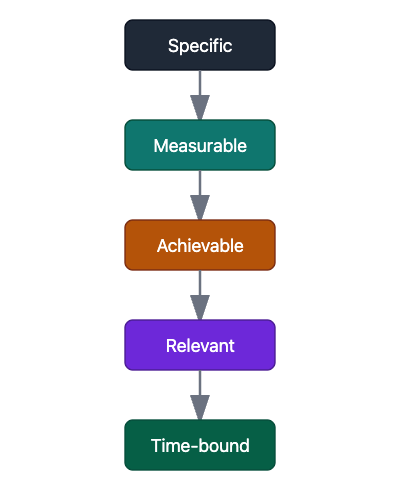Welcome to Setting and Achieving Goals as a Project Leader.
As a project manager, you play a crucial role in guiding your team toward success. The way you set goals, communicate expectations, and respond to challenges directly shapes your team’s motivation and performance. When you provide clear direction and foster open communication, you help your team understand what’s important, stay focused, and work together effectively. By setting strong goals and supporting your team’s growth, you create an environment where everyone can do their best work.
In this course, you’ll learn how to:
- Set clear, measurable goals that energize your team and align with your organization’s vision
- Foster a culture of growth, initiative, and accountability
- Identify and remove blockers to keep your team moving forward
- Inspire positivity and productivity throughout your project
Your goals are the foundation for your project’s success. When you set specific, measurable objectives, you give your team a clear target and a sense of purpose. For example, instead of saying, "Let’s make the product better," try, "Let’s reduce customer support tickets by 20% this quarter." This gives everyone a concrete outcome to work toward and makes it easier to track progress.
Use the SMART framework to set effective goals:
A SMART goal is:
- Specific: Clearly defines what you want to accomplish
- Measurable: Includes criteria to track progress and success
- Achievable: Is realistic and attainable
- Relevant: Aligns with broader team or organizational objectives
- Time-bound: Has a clear deadline or timeframe

Here are some examples of how we can take a vague goal and make it a SMART goal:
When you use the SMART framework, you show your team exactly what success looks like, how to measure it, and why it matters. This clarity helps everyone stay focused, motivated, and aligned as you work toward your project’s objectives.
How you communicate your goals is just as important as the goals themselves. Your team should know not just what you’re aiming for, but why it matters and how their work fits in. Instead of, "We need to finish this by Friday," try, "Completing this by Friday keeps us on track for user testing and our launch timeline."
Ways to build buy-in:
- Share the “why” behind each goal so everyone understands the impact
- Invite questions and feedback to make sure everyone feels heard
- Celebrate progress, even small wins, to keep momentum high
Here’s what this looks like in a real conversation:
- Jessica: Hey Chris, I wanted to discuss our next sprint. Our goal is to reduce customer support tickets by 20% this quarter.
- Chris: That’s a pretty ambitious target. What’s your plan for getting us there?
- Jessica: Good question. I think if we focus on improving the onboarding flow and updating our help docs, we can address the most common issues users report. For example, updating the help docs alone could cut down on repetitive questions by at least 10%.
- Chris: That makes sense. Do you think we can handle both tasks in this sprint?
- Jessica: I believe so, as long as we break it into milestones. We’ll start by updating the help docs, then move on to onboarding improvements. I’ll make sure we celebrate each milestone so the team can see our progress.
- Chris: Sounds good. I appreciate knowing how my work connects to the bigger picture.
In this exchange, Jessica sets a clear goal, explains the reasoning, breaks it into actionable steps, and invites Chris’s input. She connects the work to a larger outcome and makes sure Chris feels involved and valued.
When you consistently communicate with clarity, context, and openness, you create a culture where everyone feels motivated to contribute and succeed.
You’ll get to practice these skills in real-world scenarios, where you’ll see how your words and actions can directly influence your team’s engagement and results.
